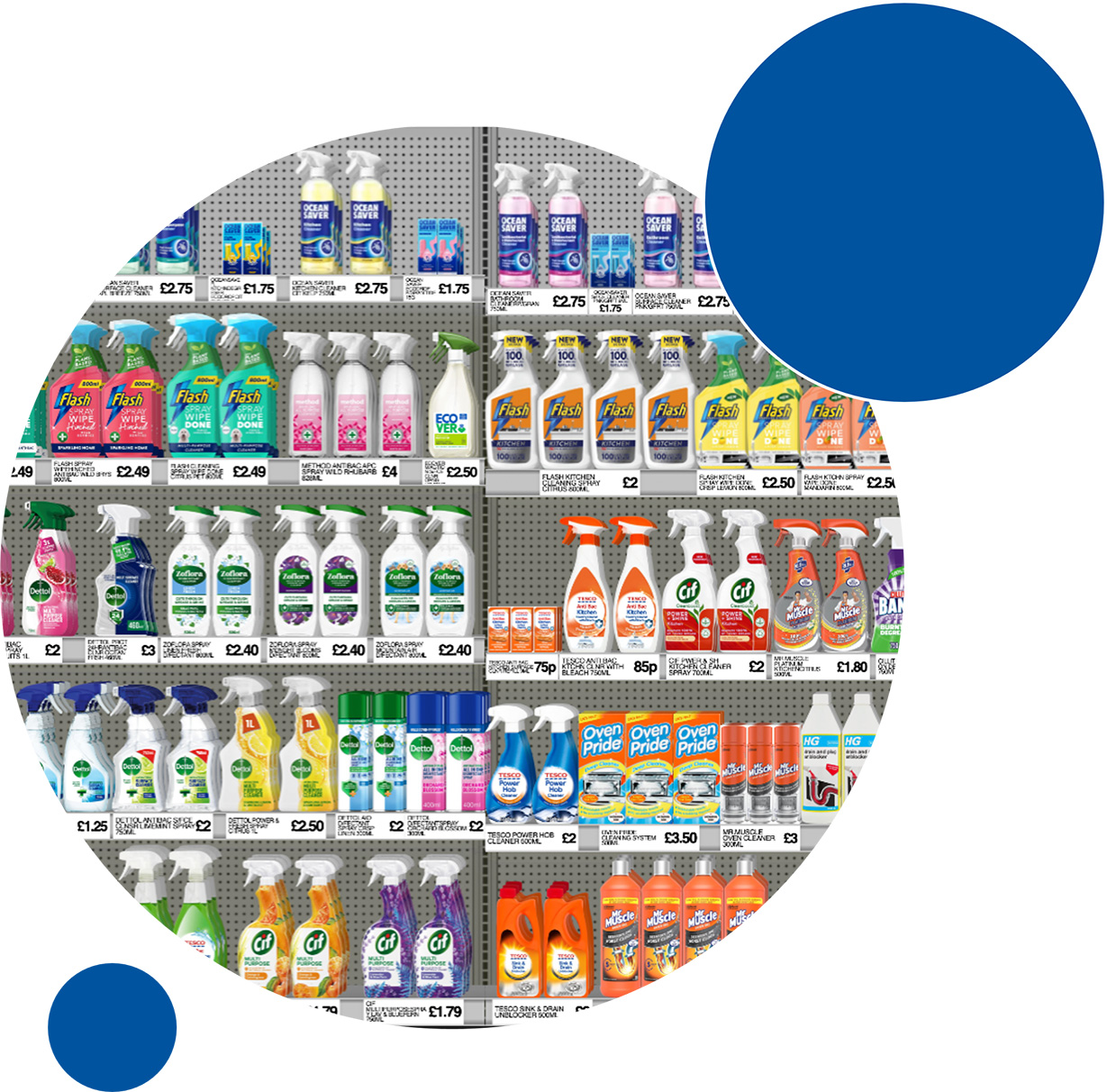- Tesco Resources
- Blog | How a dynamic view of the shelf is helping category managers tackle some of their biggest challenges
Blog.
How a dynamic view of the shelf is helping category managers tackle some of their biggest challenges
Dynamic market conditions. Evolving consumer preferences. Intense competitive pressures. And that’s just scratching the surface. Category management has always been a challenging role – one that requires a wide range of skills to do well. In today’s fast-moving world, though, the job has taken on a whole new level of complexity.
Key tasks in category management
One of the major challenges category managers face is that even simple developments – many of which are entirely out of their control – can conspire to make things much more difficult.
Take visibility, for instance – a fairly basic requirement in the current environment. When retailers carry out range reviews and resets, the resultant changes to layout and product assortment tend to have an onward impact on visibility as well. If they don’t have a good handle on what the post-reset store looks like, brands can find it much harder to adapt to changing market dynamics.

Short-term change isn’t the only consideration here, of course. Over the past couple of years, a growing number of retailers have made the shift towards store-specific planograms. While this makes a great deal of sense – allowing for much greater nuance to be factored into a layout – it also makes life more complex for category managers, who find themselves having to navigate a much wider set of planograms as a result.
That situation only becomes more complicated when you introduce regionality into the mix, which requires category managers to have a detailed understanding of the differing market conditions and consumer preferences which exist across the country.
Not all of the challenges that category managers face are “new”, however. The process of conducting store visits, for example, is an inherently inefficient one. Not only is the act of sending field teams out to get evidence of in-store layouts extremely time-consuming, the insights it leads to are generally too broad to be of much use. Building plans from photographs doesn’t tend to be the most efficient approach, either.
Finally, brands are now tasked with managing planogram data across a range of different sizes, from the most common through to the largest and smallest. To ensure the best use of shelf space, category managers need to be able to interpret those plans effectively, no matter the amount of variation between them.
With all that in mind, it’s little wonder that many category managers have begun to wonder if there’s a better way to tackle some of these key tasks.
A comprehensive view of the shelf at the click of a button
One solution to this is a tool such as Planogram Publisher, which can provide brands and category managers with instant access to planogram data across multiple locations and formats.
At the click of a button, this technology can generate up-to-date, comprehensive visualisations of a retailer’s shelf layout, using real product imagery to provide an engaging and easily interpreted view, akin to what customers see in-store.
It also delivers help retailers tackle the challenges they face in areas such as:
- Visibility management: by helping category managers maintain visibility during the changes in layout and assortment that result from range reviews and resets. It also aids localised decision-making through the provision of insights into regional variations and consumer preferences.
- Store visits: extensive physical checks can be resource-intensive and time-consuming. Planogram Publisher can have a transformative impact on the efficiency of store visits, offering comprehensive visualisations and insights remotely - ensuring that only the most important stores need to be targeted.
- Space-planning management: using shelf space to its maximum is critical. Delivering advanced analytics on factors such as share of shelf, distribution, and competitor tracking, Planogram Publisher empowers category managers to plan and visualise shelf space effectively.
- Retail media planning: category managers are keen to harness the power of retail media but it can be challenging to understand the best approach in each instance. Planogram Publisher helps by tracking the “size of the prize”, visualising designs on live plans within seconds, and planning what will physically fit on in-store fixtures.
- Proactive retail relationships: most category managers are keen to be more proactive in their retail relationships. Planogram Publisher helps by making it easy to present a strategic vision of the category - whether that means introducing innovation to the range or re-merchandising the layout based on up-to-date store and product data.
The next 12 months have the potential to be a critical period for category managers, and with changing market dynamics, shifting consumer behaviours, and rapid advancements in technology on the cards, they already have plenty to think about. With the help of Planogram Publisher, though, they can also have a few less things to worry about.
Nick Theodore is the CEO of VST, the creators of Planogram Publisher.
Planogram Publisher is available via Tesco Media and Insight Platform.